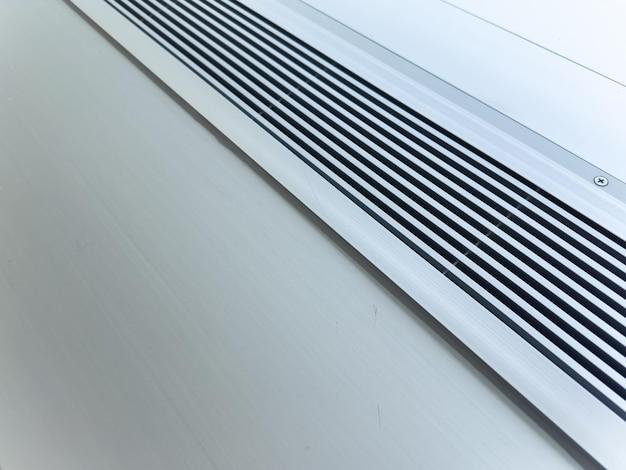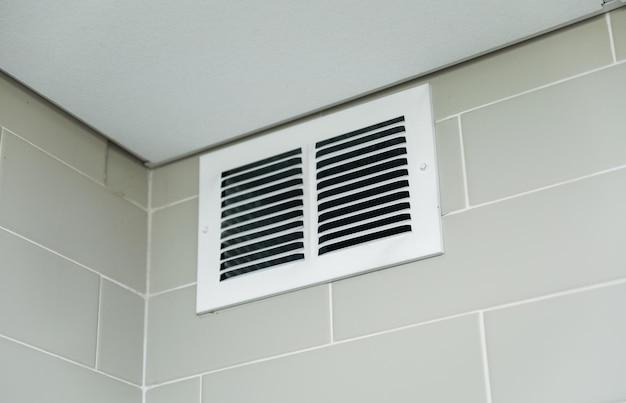Are you tired of the unsightly appearance of your exposed ductwork? Don’t worry, we’ve got you covered! In this comprehensive blog post, we will walk you through the process of covering ductwork to create a sleek and modern look for your home.
We’ll address common questions like how to insulate and conceal ductwork, whether drywall can be in contact with ducts, and the benefits of insulating your ductwork. From preventing duct sweating to hiding air conditioner ducts, we’ve got all the answers you need to transform your space. Get ready to say goodbye to those bulky and unattractive ducts and hello to a more polished and visually appealing interior!
So, let’s dive into the world of ductwork coverings and learn how to achieve a clean and cohesive aesthetic in your home. Whether you’re a DIY enthusiast or just looking to spruce up your space, this guide is here to help you every step of the way.
Stay tuned for expert tips, budget-friendly options, and creative solutions as we explore the various methods of covering ductwork. Let’s turn your ducts from an eyesore to a stylish design feature, making your home the envy of all who enter.
How to Cover Ductwork
Ductwork—it’s like the unsightly veins of your home’s HVAC system. But fear not, fellow homeowners! With a little creativity and some handyman skills, you can transform those ugly ducts into a stylish and functional part of your home. In this guide, I’ll show you how to cover ductwork with flair, so you can say goodbye to eyesores and hello to a beautifully harmonious living space.
Embrace the Camouflage: Painting the Ducts
Let’s start with the basics: camouflage. No, we’re not talking about military-style tactics here, but rather the art of blending in. One of the easiest ways to cover ductwork is to paint it to match your ceiling or wall color. By doing so, you seamlessly blend the ducts into the background, making them virtually disappear. Just remember to use a paint designed specifically for metal surfaces to ensure durability and longevity.
Get Crafty: DIY Duct Covers
If you’re feeling a bit more adventurous, why not get your craft on and create your own custom duct covers? Start by measuring the dimensions of the ducts and then head to your local hardware store to pick up some materials. From wooden slats to decorative panels, the options are endless. Not only will your homemade covers add a touch of style, but they’ll also provide a barrier between the ducts and your living space, minimizing heat loss and improving energy efficiency.
Out of Sight, Out of Mind: Concealing with Drop Ceilings
For those with exposed ducts in basements or commercial spaces, drop ceilings can be a game-changer. These versatile systems allow you to hide the ductwork within the space between the actual ceiling and a secondary, suspended ceiling. With a wide range of options available, including acoustic panels and decorative tiles, you can choose a design that not only covers the ducts but also adds ambiance and pizzazz to your environment.
The Art of Diversion: Redirecting Attention
Sometimes the best way to cover ductwork is to divert attention away from it altogether. Think big and bold with eye-catching light fixtures or stunning artwork strategically placed to draw the eye away from the ducts. By creating a focal point elsewhere in the room, you can effectively camouflage the less appealing aspects of your space. Plus, this approach adds personality and flair to your home—talk about a win-win!
Let It Blend: Incorporating Ductwork into Industrial Design
If you’re a fan of the trendy, industrial look, why not embrace your ductwork instead of covering it up? Let those metal pipes shine by incorporating them into your overall design theme. It’s all about embracing the raw, unfinished aesthetic that industrial design is known for. From exposed brick walls to open ceilings, make your ductwork an intentional part of your interior design, adding a touch of edgy character to your home.
So there you have it, folks—an arsenal of creative ways to cover ductwork and transform it from an eyesore to a stylish feature. Whether you choose to camouflage, craft, conceal, divert, or embrace, I hope these ideas have inspired you to take on your ductwork challenge with enthusiasm and a sense of humor. Remember, your home should reflect your unique style and personality, ducts and all!
FAQ: How To Cover Ductwork
How do I prevent condensation on my ducts
Condensation on ducts can be a frustrating issue, but there are a few solutions you can try:
- Insulate your ductwork: By insulating your ducts, you can prevent cold air from coming into contact with warm surfaces, reducing the likelihood of condensation.
- Seal air leaks: Inspect your ducts for any air leaks and seal them using foil tape or mastic sealant. This helps to maintain the temperature of the ducts and prevents moisture buildup.
- Increase ventilation: Ensure that there is proper ventilation in the space where the ducts are located. Good airflow can help to reduce humidity levels, minimizing condensation.
Can drywall come into contact with ducts
While it’s not advisable for drywall to directly touch ducts (to prevent potential damage and noise), you can create a gap between the drywall and the ductwork. This can be achieved by using furring strips or installing a bulkhead.
Do I need to insulate ductwork in my basement
Insulating ductwork in basements is highly recommended. Basements tend to have fluctuating temperatures, and by insulating the ducts, you can prevent energy loss and improve the overall efficiency of your heating and cooling system.
What type of insulation is suitable for ductwork
The most commonly used insulation for ductwork is fiberglass duct wrap. It is easy to install, helps to control temperature loss, and provides additional acoustic insulation.
Is exposed ductwork a more cost-effective option
Exposed ductwork can offer a unique design aesthetic and save you the cost of installing dropped ceilings or soffits to hide the ducts. However, it’s important to note that the overall cost will depend on factors such as the material used, complexity of installation, and the space in which the ductwork is exposed.
How do I install bulkhead drywall
Installing bulkhead drywall to cover ducts can be a straightforward process. Here are some general steps to guide you:
- Measure and mark the desired location of the bulkhead.
- Use a stud finder to locate ceiling joists and mark their positions.
- Install 2×4 wooden studs along the marked lines, attaching them securely to the ceiling joists.
- Attach drywall to the installed studs, ensuring a proper fit and securing it with drywall screws.
- Finish the drywall by taping, mudding, and sanding the joints, and then apply your desired paint or finish.
Will my homeowners insurance cover ductwork
In most cases, homeowners insurance does not cover the repair or replacement of ductwork unless the damage is caused by a covered peril, such as a fire or severe weather. It’s important to review your specific policy or consult with your insurance provider to understand the extent of coverage.
How much clearance is needed for ductwork
The clearance required for ductwork varies depending on local building codes and regulations. However, a general rule of thumb is to provide at least 1 inch of clearance around the ducts to allow for proper airflow and insulation.
Is it necessary to insulate exposed ductwork
Insulating exposed ductwork is not always mandatory, but it can offer several benefits. Insulation helps to reduce heat loss or gain, prevents condensation, and minimizes noise transmission. Ultimately, the decision to insulate exposed ductwork will depend on your specific needs and priorities.
How can I prevent my air ducts from sweating
To prevent air ducts from sweating, you can follow these steps:
- Insulate the air ducts using appropriate insulation materials.
- Seal any air leaks in the ductwork.
- Ensure adequate ventilation in the space where the ducts are located.
- Control the humidity levels in your home through dehumidifiers or ventilation systems.
What are some ways to cover exposed ductwork
There are several creative ways to cover exposed ductwork, including:
- Installing decorative screens or lattice panels around the ducts for a stylish and functional solution.
- Using fabric or curtains to create a soft, draping effect that hides the ductwork while adding a touch of elegance.
- Incorporating built-in shelving or storage units to disguise the ducts while providing additional functionality.
- Employing creative paint techniques or mural designs that integrate the ductwork into the overall aesthetic of the space.
Can drywall be attached to ductwork
Attaching drywall directly to ductwork is not recommended, as it can lead to noise transfer and potential damage to the drywall. It’s best to create a gap between the ductwork and the drywall using furring strips or installing a bulkhead for a proper installation.
How can I conceal ductwork in my basement
To hide ductwork in your basement, you have a few options:
- Install a dropped ceiling or soffits to cover the ducts while maintaining access for maintenance and repairs.
- Use drywall to enclose the ductwork, creating a seamless and finished look.
- Utilize decorative columns, room dividers, or built-in cabinetry to direct attention away from the exposed ducts while adding architectural interest to the space.
Can I wrap my ductwork with insulation
Yes, wrapping ductwork with insulation is a common practice to enhance energy efficiency and minimize heat loss. Insulation helps to maintain the desired temperature inside the ducts, preventing energy waste and reducing utility costs.
How much does it cost to seal and insulate ductwork
The cost of sealing and insulating ductwork can vary depending on factors such as the size of the system, accessibility of the ducts, and the insulation materials used. On average, homeowners can expect to spend between $1,500 and $2,500 to seal and insulate their ductwork.
What is the cost of wrapping ductwork
The cost of wrapping ductwork with insulation depends on the size and complexity of the duct system. Generally, wrapping ductwork can range from $1 to $3 per linear foot. However, it’s recommended to consult with a professional contractor for an accurate estimate based on your specific requirements.
Is it worth insulating ductwork
Insulating ductwork is definitely worth considering for several reasons. Insulation helps to minimize energy loss, improve HVAC system efficiency, and enhance comfort by maintaining the desired temperature throughout your home. It can also contribute to reduced energy costs in the long run.
Can heating ducts come into contact with wood
Heating ducts should not touch wood directly. It’s important to maintain a proper clearance between heating ducts and combustible materials, following building codes to ensure safety and prevent fire hazards.
How can I conceal my air conditioner ducts
To hide air conditioner ducts, you can explore the following options:
- Use decorative vent covers or grilles that match your interior design.
- Incorporate a ceiling or wall-mounted screen that partially obscures the ducts while adding a decorative element.
- Install a fabric or curtain system that can be easily adjusted to cover or reveal the ducts as desired.
- Extend cabinetry or shelving units to conceal the ductwork while providing storage or display space.
Now that you have a comprehensive FAQ section, you’ll have all the information you need to cover ductwork and tackle any related concerns. Remember to consult with professionals for specific questions or projects to ensure optimal results.

